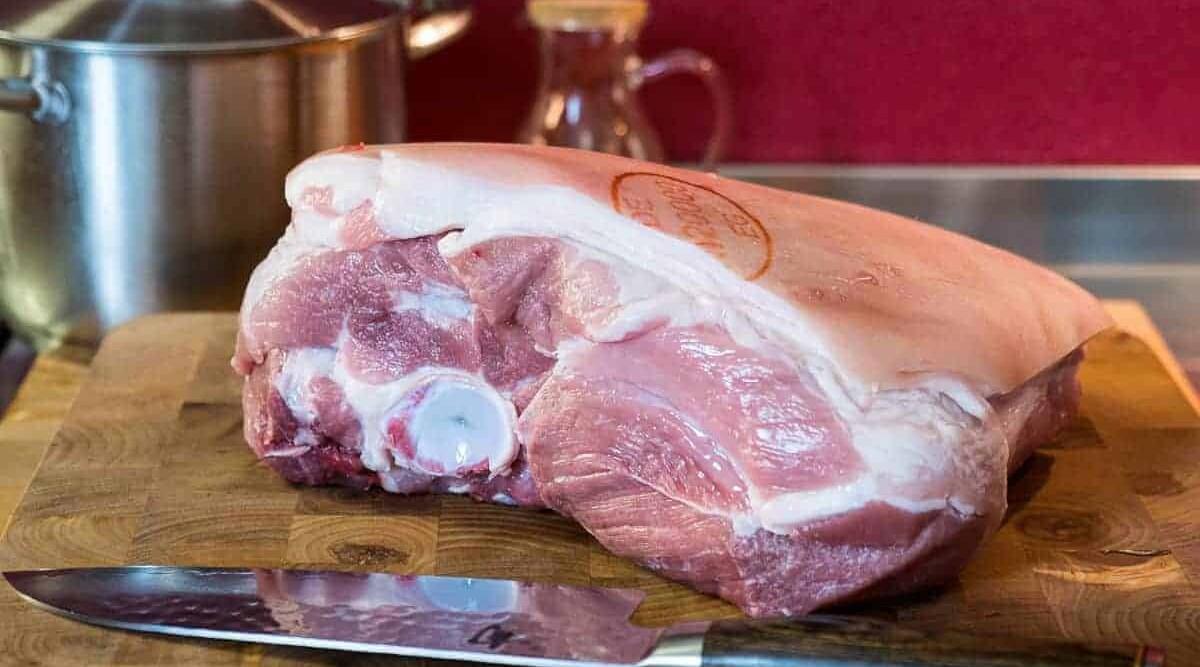
There’s an old barbecue joke I like to tell, “If you could choose between smoking a pork butt or marrying a supermodel, would you smoke your pork butt fat side up down?”
While that may be funny, some people are mighty opinionated when it comes to cooking pork butt fat side up or down. Some people swear one is superior to the other.
Meanwhile, many of us wonder; is there really a benefit of doing it one way over the other?
That’s what we’re going to discuss in this article.
Key Takeaways
- Fat cap up — Bastes the meat as the fat melts. But this can ‘wash away’ some of your rub.
- Fat cap down — in most smokers with heat from below, uses the fat cap to ‘protect the meat’ and help prevent it from drying out. But it can lead to more dripping, flare-ups, etc.
- Flipping halfway — can give you the best of both worlds, while minimizing the downsides.
- We recommend — Smoking a pork butt with the fat cap toward the heat source.
Jump to:
What is a Fat Cap?
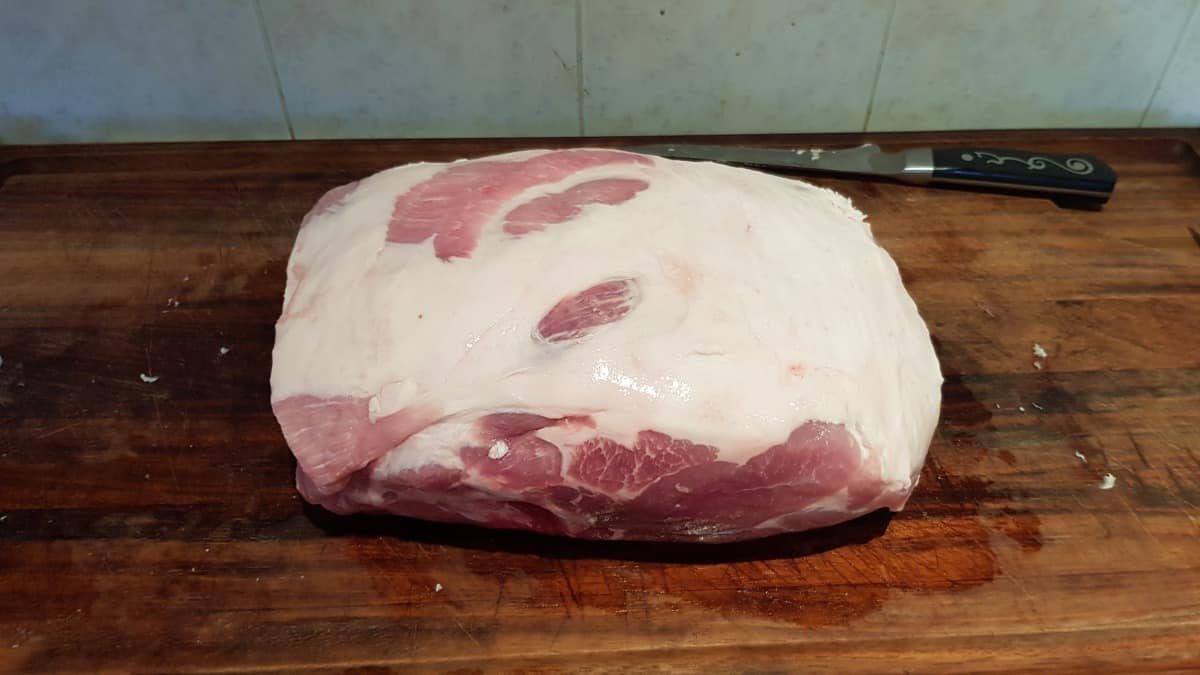
On many large cuts of meat like the pork butt or pork shoulder, there is a fat cap, a layer of hard white fat that sits on top of the meat. (Do you know the difference between a butt and shoulder? It may not be what you think! Check out our guide, pork butt vs pork shoulder for the low down.)
This fat can sometimes be as much as an inch in thickness and will have to be mostly removed before cooking. If the butcher hasn’t removed it, most home cooks will trim it down themselves prior to cooking.
You do not need to remove all the fat, and you should be careful not to trim too much, so you do not remove any of the meat below.
Cooking a Pork Butt Fat Side up
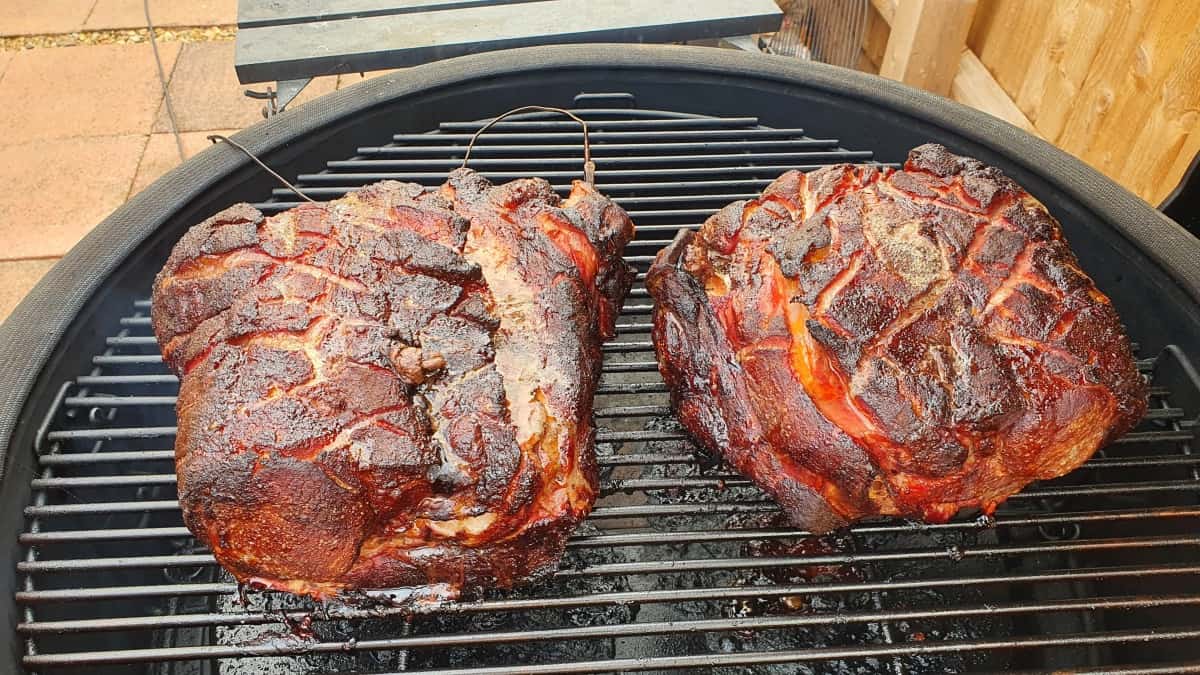
Some people will only cook their pork shoulder with the fat cap facing up. The main reason for doing so is they swear it allows the fat to baste the meat as it renders away.
Some will even take it a step further, and state it will allow the fat that is left on top to melt and penetrate into the meat. Not so says New York Times bestseller Meathead Goldwyn, he is quick to explain that for many reasons fat cannot penetrate into the meat as it is cooked.
Among other reasons, he simply explains that meat is mostly water, and fat is mostly oil. Water and oil do not mix. The fat will remain on top of the meat, possibly render away and melt off of it basting the meat, but it will not penetrate deep into the meat as it cooks.
Pros
While it may not do much, a melting fat cap will somewhat baste the meat on the surface of the pork shoulder as it renders away.
Cons
An obvious flaw in this method of smoking a pork butt is with the fat cap melting and running down over the meat, it can potentially wash away and remove some of the rub that you put on the exterior of the pork shoulder.
Cooking Pork Butt Fat Side Down
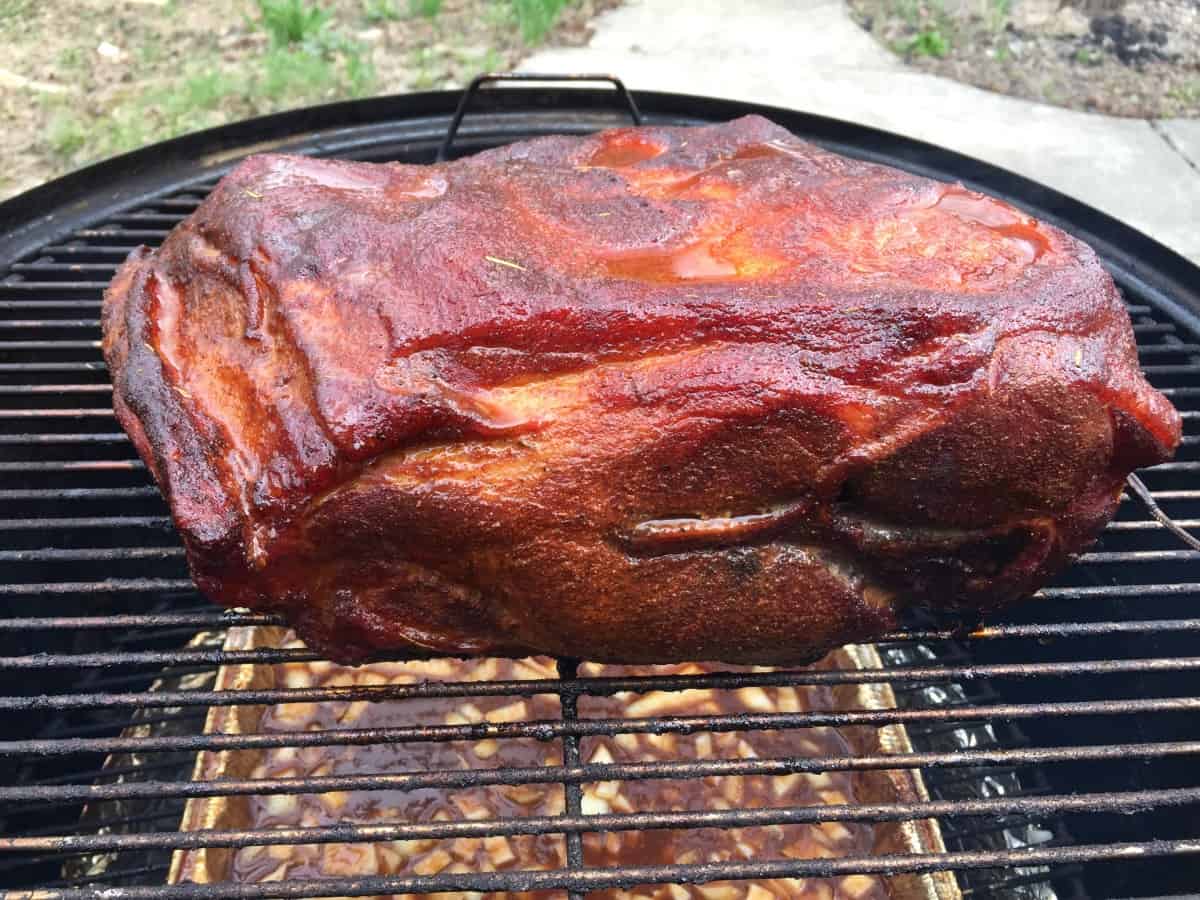
Just like how some people swear cooking fat cap up is the only way to do it, there are others who swear that cooking fat side down is far superior.
Pros
The main reason for cooking with the fat cap down is many people feel doing so allows the fat cap to act as insulation, protecting the meat from the direct heat and will keep the meat from drying out. Also having the meat side up allows a better pulled pork bark to form, without the impressions of it resting on the grill grates.
Cons
Fat burns, and depending on the configuration of your smoker placing the fat cap on the bottom will run the risk of exposing it to direct heat and can cause flare-ups.
This could also result in a charred and crispy pork shoulder, and not in a pleasant way.
Flipping the Pork Shoulder
A less common way to cook a pork shoulder, or any other large hunk of meat, is to flip the meat as it cooks periodically. This way it spends time with the fat cap both facing up, and down.
Pros
You are getting the best of both worlds. The fat cap can take turns between rendering down, basting the meat, and acting as a barrier to keep the precious meat from drying out.
Cons
Every time you flip your pork butt over, you are going to lose some of that rendered down fat that has been basting the meat.
Also, by continually opening and closing your smoker, heat is going to escape and will need to recover once you close the lid, ultimately adding to the overall cook time.
Different Methods for Different Smokers?
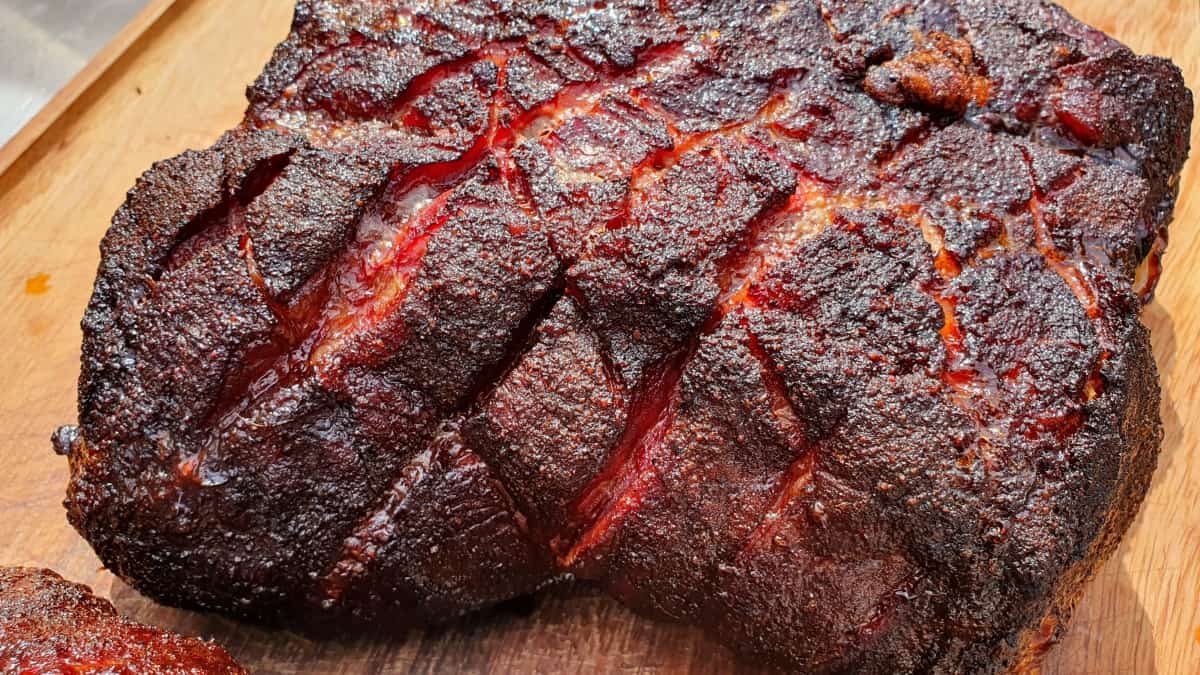
Should your smoker determine if you cook your pork shoulder fat cap up down? Yes, according to Joe Haynes, Certified BBQ Judge, and blogger at Obsessive Competitive Barbecue.
Joe explains that every smoker is a little different and that the heat source will come from different areas depending on how your smoker is designed.
Joe thinks that the fat cap should face whichever way the heat is coming from. If the heat is coming from the bottom, cook with it down. If the heat is coming from the top, cook with it up.
Our Advice on Pork Butt fat Side up or Down? — Face it Toward the Heat
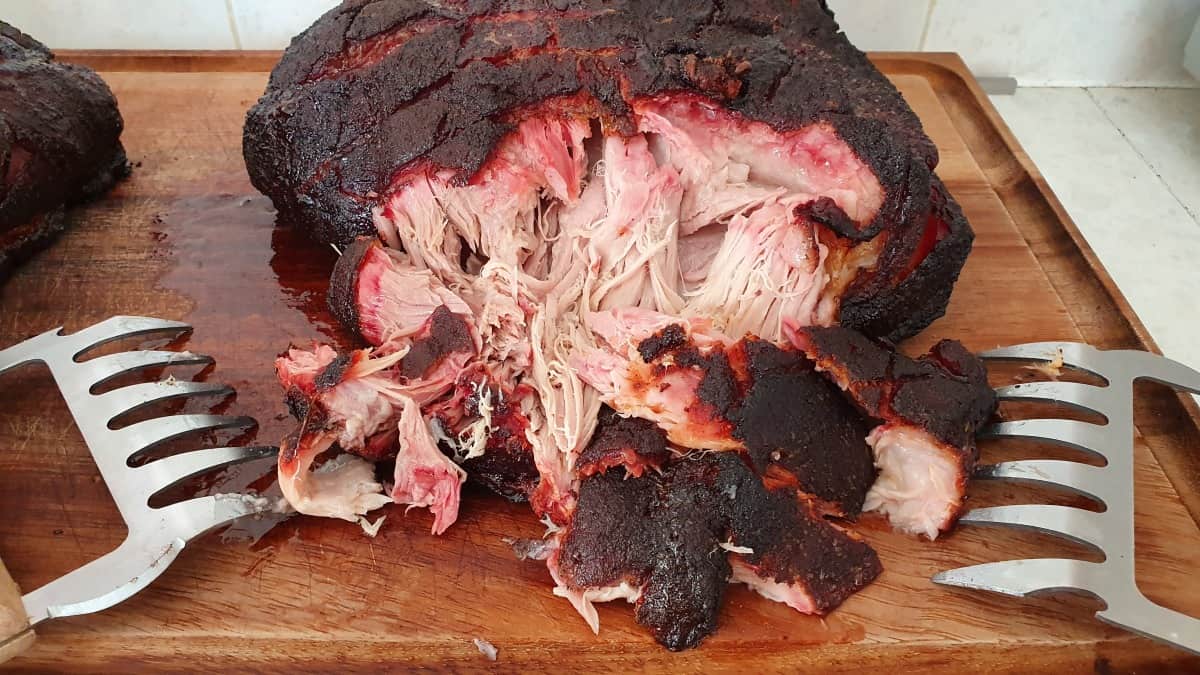
Further to Joe’s recommendation above, we believe the best way to cook a pork butt, or any other meat with a fat cap, is to cook it with the fat cap facing toward the heat source.
The key in most smokers — since they all have certain hot spots and temperature gradients — is to then not leave your pork shoulder in the one position for the whole cook but to instead spin it around on the grill grate so that all sides of the pork shoulder can evenly cook, render away, and receive smoke from the fire.
We do mean to spin, to rotate, not to flip it over. The fat cap should stay the same way, either top or bottom for the whole cook, and which will depend on where your heat source is.
For any vertical smoker such as a kamado, Weber Smokey Mountain water smoker, an ‘Ugly Drum Smoker,’ or pellet smokers, where the heat source is from below, this means fat side down.
For offset smokers, most of the heat comes from one side, flows through the unit and then down from above, so we recommend fat cap up.
Ultimately, we strongly recommend that most people experiment to see what works best for you with the tools you have available. And hey, once you’ve smoked your pork butt, don’t forget to check out our guide on how to pull pork properly 😉
Conclusion
What do you think of our take on cooking a pork butt fat side up or down? What do you do when you cook a pork shoulder and why? Do you think we’ve missed any obvious points?
Please leave us a comment down below letting us know what you do and why, so we can all learn from each other!
And if you liked this article, we’d really appreciate you sharing it with any of your grilling friends.


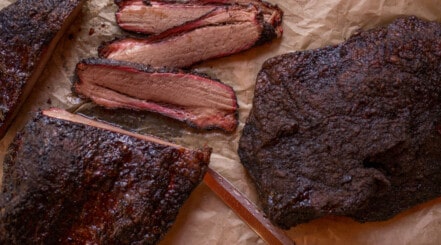
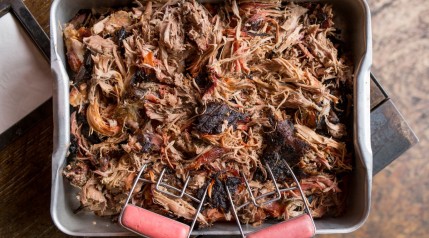
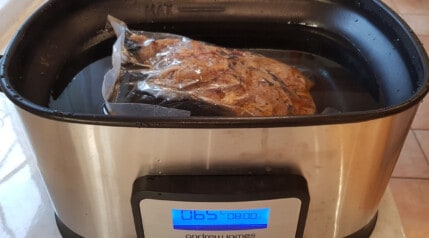
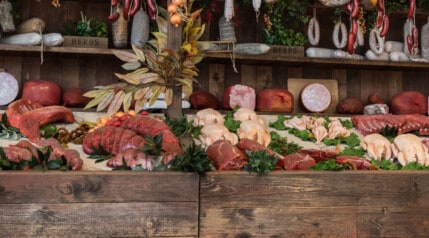
Fat cap up!
Really enjoy your articles!
Thanks, John 🙂
Does anyone have any recommendations cooking a pork shoulder on a chair-broil patio bistro electric grill is their a certain way too cook a pork shoulder on a chair-broil patio bistro electric grill
Mark,
I agree with your conclusion. I have two Green Eggs and have smoked my share of butts. I like fat cap down. I don’t worry about a drip pan just slap a piece of tin foil on the plate setter for easy clean up. I also like a nice thick layer of rub on a butt and I don’t want it down getting raked off on the grill grates. I want it on top to turn into a nice char I can mix in with the rest of the meat when I pull it.
All makes perfect sense, Bob! I rarely use a drip tray either, and these days don’t even bother with covering my deflector plates, I just turn them over to burn off next time I’m heating my kamado.
Thank you, Mark I am fairly new to the smoking
arena. Will try your tips today.
Best of luck, Brett! And practice makes perfect, so smoke often 😉
I’ve done both on my offset smoker. Contrary to popular belief, I prefer fat down. However, I do agree with you the model doesn’t stand a chance…
I prefer fat down for the same reason I don’t wrap. I love my bark and both take away from my bark. Fat down even on my offset helps insulate the butt from the hot grate, and the melting fat doesn’t wash away any rub. Also I don’t wrap, just man up, grab another cold one, and hang out through the stall. The bark at the end is worth it.
It’s worth noting I’m not a competition smoker, I just smoke for family and friends, so time limits aren’t a factor. Proper planning is all it takes.
Happy smoking!
Thanks, Smokey. There’s no right or wrong really, and we all arrive at our own likes and preferences over time. I agree with you on the bark thing though, I never wrap a butt anymore as they just don’t need it and the deeper, tougher, chewier bark you get and can distribute throughout when pulling, really improves the end result IMO.
Hi Mark, I enjoyed your article on smoke butt. I have a 4.5 lbs butt in my fridge. I plan to smoke it in my Masterbuilt electric smoker. I am planning on a dry rub. Any ideas as to how long to cook this meat from start to finish. Thnx, Eve.
Hi Eve,
Thank you, always nice to hear people enjoy the content 🙂
For a pork butt, the cooking time depends on so many factors, not least of all the particular animal it came from, how much intramuscular fat and connective tissues the animal had.
A good rule of thumb is 1 to 1.5 hours per-pound, and in my experience normally on the higher side of that. So at 4.5lbs, you’d be looking at something like 4.5 to 6.5 hours, normally closer to the 6.5 hour side of things.
How I cook it is:
Pit temp 225f to 250f (I usually aim for 235f and hold it anywhere from 225f to 250f)
Meat thermometer right in the center to monitor the cook, making sure it’s not closer than an inch to the bone (which can give false readings.)
It will stall somewhere around the 150f to 155f region, where moisture evaporating from the surface will prevent any further rise in the internal temp of the meat, and this can last for hours. To speed up the cook, many people wrap it here, either in pink butcher paper or in foil, and sometimes even adding a liquid. This will prevent the evaporation, and force the internal temp to climb, blasting through the stall and speeding up the cook by hours.
However, I recommend NOT to wrap it and I never do with pork butt (I do with ribs and brisket) because it destroys the bark. If you let it cook right through unwrapped, you will get an amazing, thick, deep and chewy bark, that when you pull it, and it’s distributed throughout all the meat, is a much nicer, flavorful texture. Without the bark, you are missing that ‘little extra’ you could have had, and the pork can appear a bit too moist and textureless.
When the internal temp of the butt hits about 195f, you want to start checking for doneness by probing it all over. It should be absolutely tender and ‘probe like butter.’ If it’s a ‘bone in butt’, you can also try to turn the bone, and it should effortlessly spin, with no resistance, showing all the connective tissues have melted.
If it’s not probe tender all over, or if the bone doesn’t turn completely freely, it’s not quite done. Continue cooking and check it again every 3f or so (at 198f, at 201f, at 204f etc.) until it’s done. In my experience, a butt is almost always done at between 195f and 205f, usually toward the lower end of that range, though sometimes, (very rarely), it can be as high as 205f…or even slightly higher. But always go by feel and the bone test, not by internal temp.
I always rest it for 30 minutes to an hour after cooking, in loosely tented foil if serving right away. If it’s cooked way before it’s needed, I wrap it in foil, then in a towel, and place in a cooler where it can be held for up to 4 hours before pulling. Leave the temp probe in and do not allow it to drop below 145f whatever you do. But know that the hotter it is, the easier it is to pull, and I prefer to pull it while it’s still hotter than 175f myself. If while being held it looks like it will drop below 175f, I usually place it in my kitchen cooker at 175f to hold it until I want to pull it and serve.
Finally, when pulling, if there are any really big lumps of fat, throw them out as there’s enough fat in there already (smaller bits, just pull and mash them right in, it’s all good flavor ;-))
Best of luck!
Hey thanks so much for taking the time to share techniques, and hand hold those of us new at tackling pork promise. At first, I thought I was probably a dope for even searching for fat up or down. So glad I found this article and shares. Appreciate it guys!
Thanks, Steph. And hey, not even close to a dope for searching for answers. A dope is someone who never seeks out answers! We’re always learning 🙂
This article and comment answer are so helpful, thanks! Smoking my first butt in a pellet grill today! I went fat side down because, well, that’s just how I put it in! 🙂
Thanks, Christine 🙂
I’m new to smoking and my wife bought me a pellet smoker for Christmas (I think she wanted it more than me). Thank you, for this article. Really put me at ease as today is my first pulled pork smoke and I really had no idea what I was doing. I searched YouTube and Googled for days. I finally found my answers.
Glad it helped, Nat.
Interesting read. There are pros and cons to either method. End result is good BBQ. If you have a strong opinion, do it your way. I have done both, and in the end not seen much of a difference.
Fat cap on top!
I don’t have a smoker and slow roast in the oven. I’ve tried it both ways and was sorely disappointed with the fat on the bottom. The top corners burnt and wasted a lot of meat. It wasn’t as tasty, either. That’s been my experience.
It’s probable in an oven fat side up is best. You likely have the pork placed in a roasting tin, so it’s shielded from the heat coming from below, whereas the top is exposed and facing the radiant heat from the top element(s) in the oven, so you would want to point the fat cap toward the top: Roasting tin shielding from heating elements below, fat cap shielding from heating elements from above.
Since I cook on a Pit Barrel Cooker, with heat source coming from below, I trim most of the fat cap off, and, place the butt fat cap down on the grill. If you don’t trim the fat cap, you may get flare-ups and/or dowsing of the coals from the melting cap.
Fat side up on an offset smoker. Will try the spin on my last hour of smoke.
I got TWO pork butts! One’s going fat cap down on my pellet smoker and one is going fat cap up. Oh, and I disagree with the notion that the heat in a pellet smoker mostly comes from the side. That heat shield on a pellet smoker gets darn hot, and it’s only inches from the meat., The good thing is that heat shield is not going to flare up. I got a Pit Boss 820D, and I get nothing but rave reviews on my pulled pork whatever way I put the fat cap. 🙂
Hi Rich,
Thank you for your comment. I agree, most pellet smokers have the fire pot in the base, that’s then covered with a deflector to reduce the amount of radiant heat and disperse heat further and more evenly. I will correct that shortly.
I start fat cap down for a few hours than wrap and finish cap side up. Let the steam render the fat down for last couple hours.
I cut one in half, put one up and one down. I could not tell any difference
Thank you! My heat source is below, so fat side down for me!
Hi. We just got done smoking a pork butt. Would you suggest to wrap it and store it fat side up or down when resting?
Hi Julie,
It wouldn’t make any difference to the quality of the end product, so it really doesn’t matter.
Awesome article, both cooking methods of fat side up or down are spot on. I believe that how the roast is to be served plays into which method would be best. And myself, I enjoy using indirect heat on Weber charcoal grill.
I start with fat cap UP, when it hits 175 degrees I flip it over. If you seasoned overnight you won’t lose much to fat run. THEN I flip it over, re-season lightly and continue to 195 degrees. Then I apply my first glaze base and wrap in foil and cook to 205 degrees. Pull, rest, unwrap and apply final glaze, back on for not more than 15 minutes . KILLER GOOD.
Is it unheard of to cut your pork shoulder in half to save cooking time. A 14 lb cut in half would only take 7 hrs
Vs 14. Is this unheard of?
Totally doable. It’d probably lose more moisture, due to an increased surface area to volume ratio. Though on the plus side would have more rub — and bark on the finished product — due to the increased surface area.
Thanks for the Pros and cons…up for me!!!
Thank you for all the great information your site offers! Making my first smoked butt today on Big Green Egg. Spent way too long on YouTube to no avail when all my answers were On your site. Thanks, friend, with love from Texas.
Thanks Holley, and best of luck with your cook. Let us know how you get on!